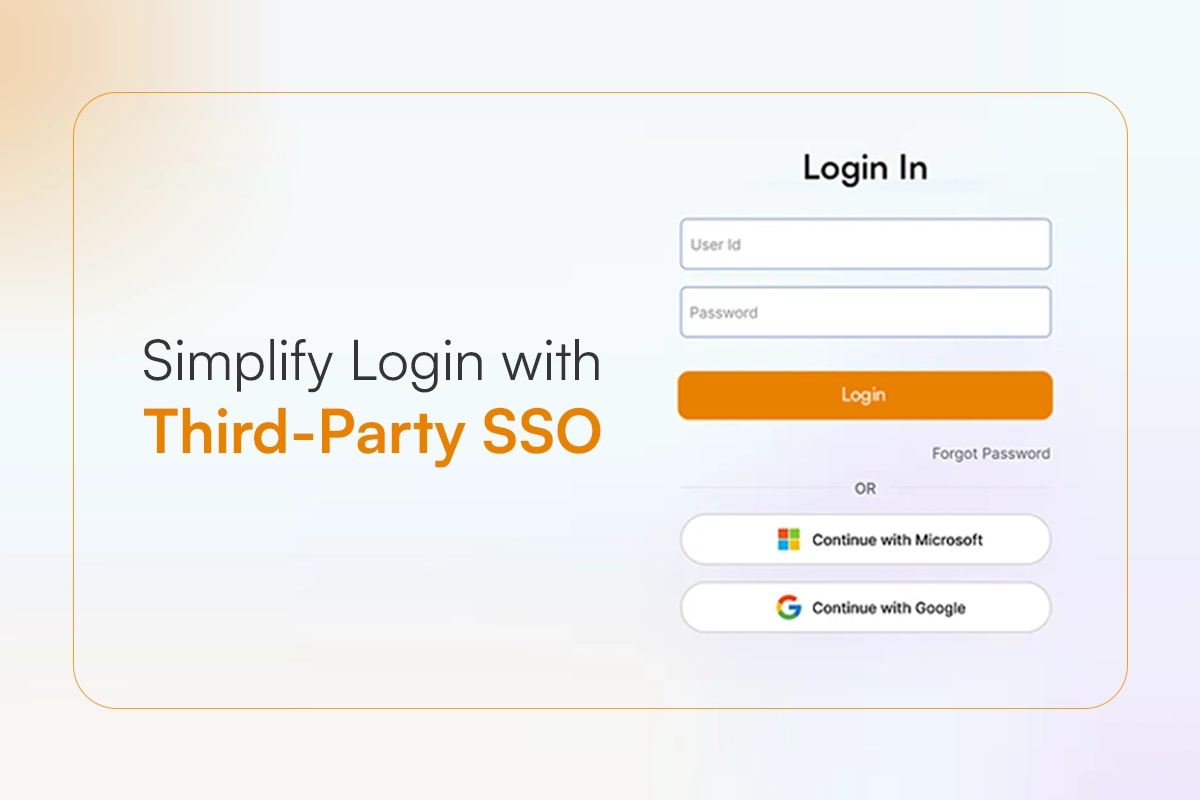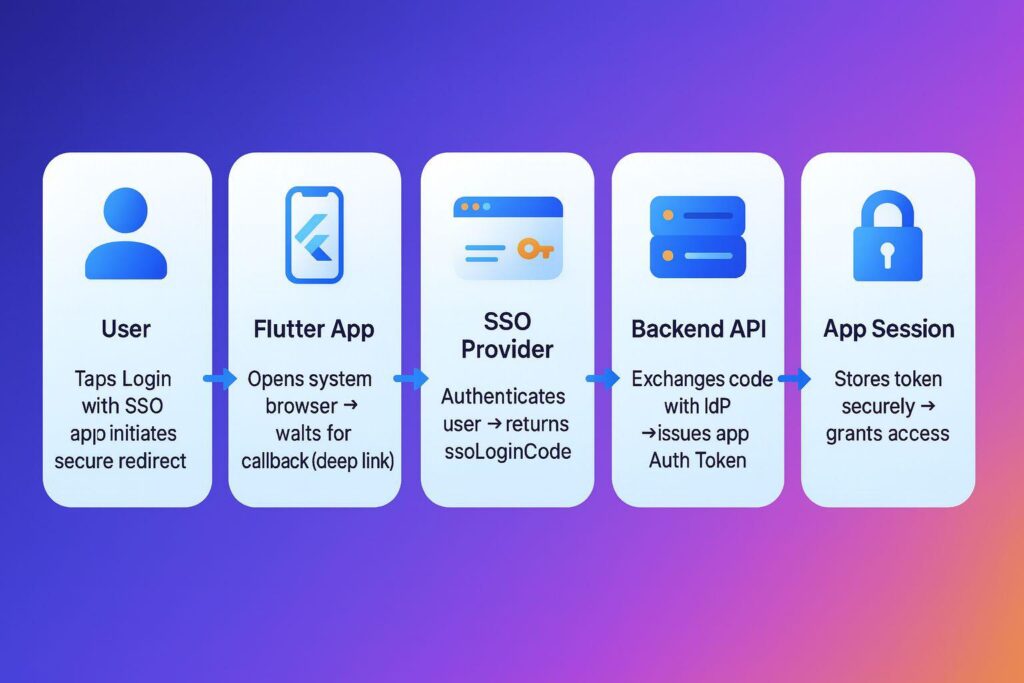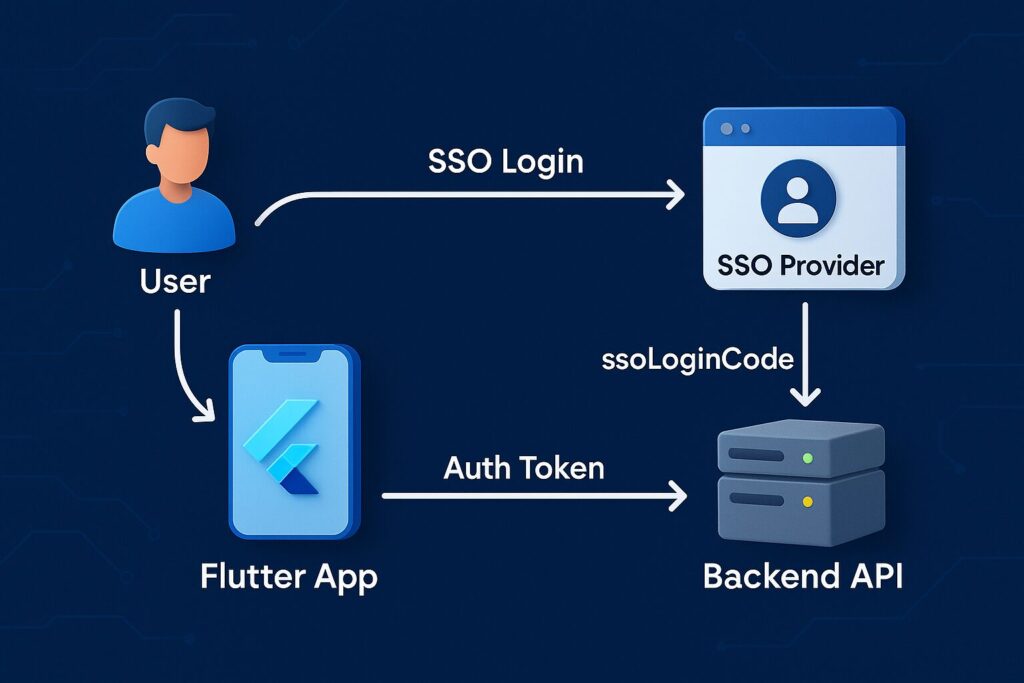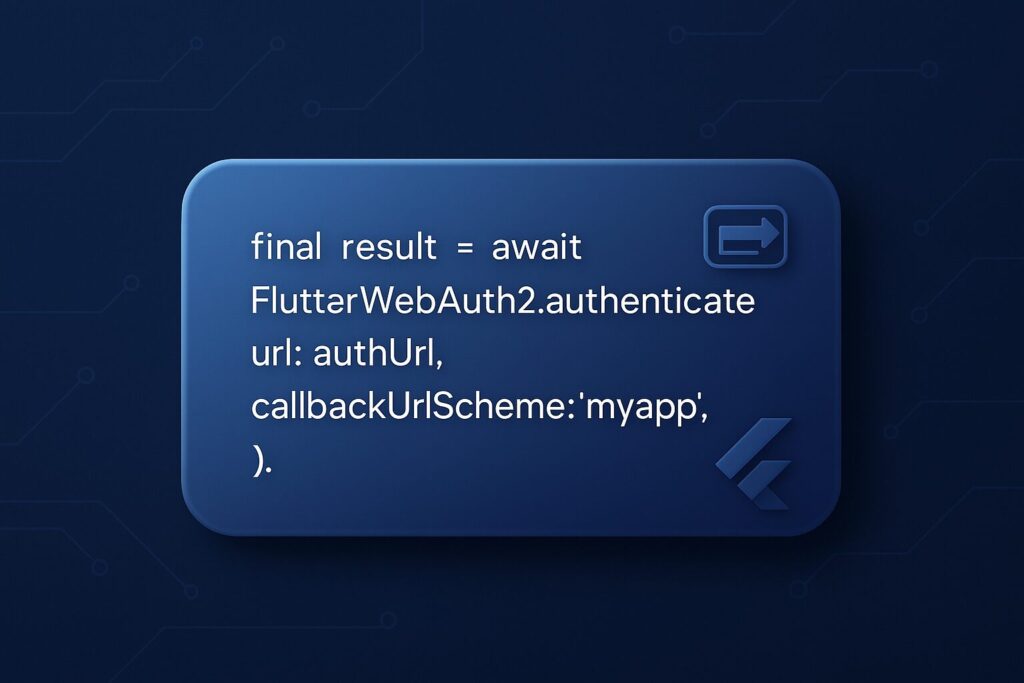How to Implement Third-Party SSO Flow in Flutter?

Introduction
At Techify, we recently implemented a secure third-party SSO setup for a large-scale Flutter application. This blog captures the exact approach we used, covering the redirect flow, handling the SSO login code, and finalizing a backend-driven token exchange that ensures enterprise-grade authentication.
SSO Architecture Breakdown
Before diving into code, it’s helpful to step back and look at the bigger picture. SSO might feel complicated the first time you work with it—redirects, deep links, authorization codes… It’s a lot. But when you break it into the main moving parts, the whole flow becomes surprisingly easy to understand.

Each piece of this chain plays a critical role:
- The User triggers the login request.
- The Flutter App is responsible for navigating them to the correct SSO login page.
- The SSO Provider (Azure AD, Okta, etc.) handles all identity checks.
- The Backend API performs the secure part—exchanging the code for the actual token.
- The App Session Layer stores that token safely and allows the user into the app.
When these components work together, the login feels seamless to the user, and your app stays clean and secure. Instead of managing passwords, handling sensitive secrets, or storing long-lived tokens on the device, you rely on a proven and secure identity provider.
This breakdown is exactly the architecture we implemented at Techify in one of our enterprise apps—and it has helped simplify our authentication logic while significantly improving security and maintainability.
Why Third-party SSO Matters?
Modern enterprises rely on centralized identity solutions such as Azure AD, Okta, Auth0, and custom SSO providers. Instead of juggling separate credentials for every internal system, SSO gives employees one secure and seamless Point of access.
For Flutter developers, this means implementing a safe redirect-based login flow backed by a secure server-side token exchange.
Architecture Diagram

Techify’s Real Implementation Flow
- User taps Login with SSO inside the Flutter app.
- The Flutter app opens the system browser with the SSO login URL.
- User logs in using corporate credentials.
- SSO provider redirects back into the app via a configured deep link.
- The redirect URI contains a short-lived ssoLoginCode.
- The Flutter app sends this code to our backend API.
- Backend exchanges the code with the identity provider.
- Backend returns a secure Auth Token to the app.
- App stores the token securely and grants authenticated access.

Final Thoughts
A well-designed SSO flow keeps your Flutter application clean, secure, and scalable. Redirect handling, deep linking, and backend token exchange form the backbone of a reliable login experience.
At Techify, this architecture allows us to meet strict enterprise security standards while keeping the user experience smooth and intuitive.





